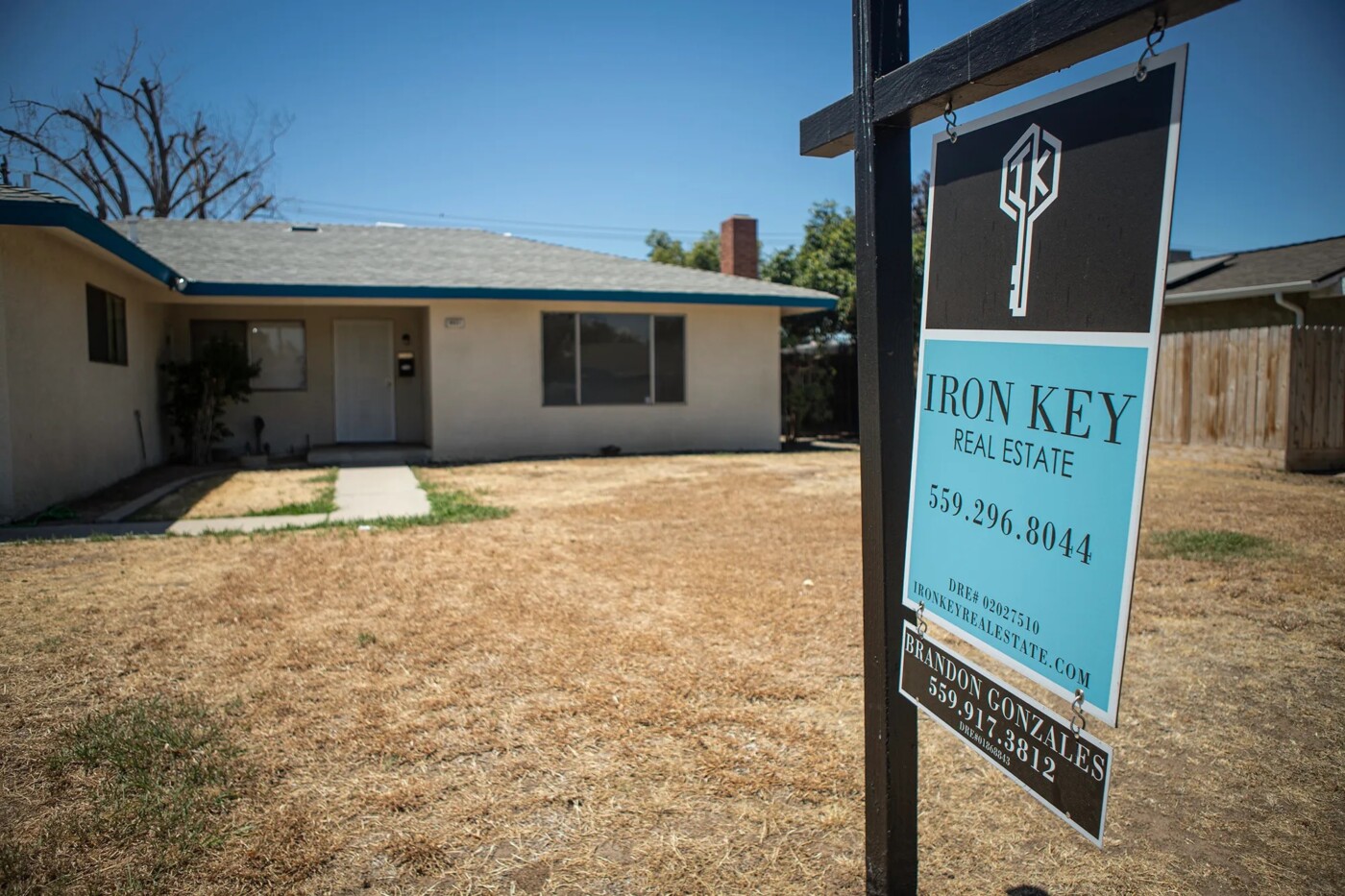Inland cities including Bakersfield, Fresno, Visalia and Riverside — once cheaper options than pricey places such as the Bay Area — are no longer refuges from California’s housing affordability crisis.
Since the beginning of the pandemic, the typical asking rent in these former bastions of relative affordability have exploded by as much as 40%, according to data from the real-estate listings company Zillow.
California’s inland rent spike is yet another lasting effect of the COVID-19 pandemic. Beginning in 2020, California’s dense metropolitan coast saw an outflux of people, as educated white-collar workers, suddenly untethered from the office, packed their bags in search of cheaper and more socially distanced modes of living.
For many smaller California towns, the surge of new residents competing for housing has placed new financial pressures on lower-income residents, upended local housing markets and, in some cases, shifted the politics around housing and affordability.
In Santa Maria, just an hour up the 101 from Santa Barbara, the last three years have been a “perfect storm” for renters, said Victor Honma, who oversees housing vouchers across the region for the Housing Authority of the County of Santa Barbara.
The town was awash in suburb-seeking homebuyers from Los Angeles, the Bay Area, and nearby Santa Barbara and San Luis Obispo. The suddenly hot housing market persuaded many longtime local property owners to sell their rentals to the wave of new homebuyers, reducing the rental stock further. And though Santa Maria had always had a “healthy supply of inventory,” said Honma, the available homes ran on the large side, leaving few one-bedroom units to go around for many suddenly desperate renters.
These trends were in the works prior to 2020, but “the pandemic was a stimulus,” he said.
It’s the same story in Bakersfield, where rents have jumped 39% since March 2020, as priced out Angelenos migrated north of the Grapevine, said Stephen Pelz, executive director of the housing authority in Kern County.
Since then rising interest rates have cooled the national housing market. But Pelz said the higher cost of borrowing has only added to the woes of Kern County renters: Fewer people purchasing homes has meant more competition for the area’s remaining rental units.
Jeff Tucker, an economist at Zillow, said the inland rental crunch is the inexorable result of California’s overall housing shortage, as the affordability crisis along the coast ripples outward. Cities in the Central Valley used to enjoy a healthy “affordability advantage” over coastal urban areas, he said. But that advantage has begun to shrink over the last three years.
“People have been moving towards that more affordable option when they don’t have anywhere else in California that they can afford,” said Tucker.
According to Zillow’s seasonally adjusted “observed rent index” — a kind of gussied-up average that strips out exceptionally pricey or cheap outliers in a given market — the typical rent in the Fresno metropolitan used to be 54% cheaper than that in San Francisco. As of June 2023, that discount dropped to 40%.
Further south in Bakersfield, where renters used to pay roughly half of L.A. area tenants, on average, the difference has narrowed to 40%.
In part, that’s just a function of arithmetic. In both the Bakersfield and the Los Angeles metro areas, the typical rent increased by a little more than $500 since the beginning of the pandemic. Because Kern County rents were much lower to begin with, $500 represents a larger percentage hike.
But for the average Bakersfield area resident, that $500 rent hike pinches a lot harder: The average income in Kern County is roughly $25,000, according to the most recent Census data. In L.A. County, the average is $38,000.
Some modest relief could be on the way.
The cities of Bakersfield, Visalia and Fresno have all permitted roughly 15% more units in 2021 and 2022 than they did in the two years before the pandemic, according to data collected by the state Housing and Community Development Department.
The city of Santa Maria has permitted 150% more. The bulk of the new or incoming units around town are accessory dwelling units — backyard cottages and annexes. For a city short on lower-cost single bedroom places to live, the new crop of ADUs are “really filling that gap,” said Honma.
While building more places for people to live is one part of the battle, others have tried to soften the impact on rents of existing housing stock.
Earlier this year, tenant rights and anti-poverty advocates mounted a campaign to push the city of Fresno to adopt a rent control ordinance. For a city whose most notable politico, Democratic U.S. Rep. Jim Costa, lent his name to a state law that restricts local governments for enacting or expanding rent control laws, it was a symbolic push.
Further south, activists in Delano were competing to see which town would be the first in the Central Valley to enact a permanent cap on rent hikes.
Neither campaign was successful. Fresno’s city council declined to include a rent stabilization program in its budget for this fiscal year and elected leaders in Delano agreed only to study the issue.
In Sacramento, many of these same advocacy organizations have been pushing a bill by state Sen. María Elena Durazo that would have, among other things, lowered a statewide cap on annual rent increases from 10% to a mere 5%. But that provision was stripped out, leaving only new rules that make it harder for landlords to evict tenants without cause.
